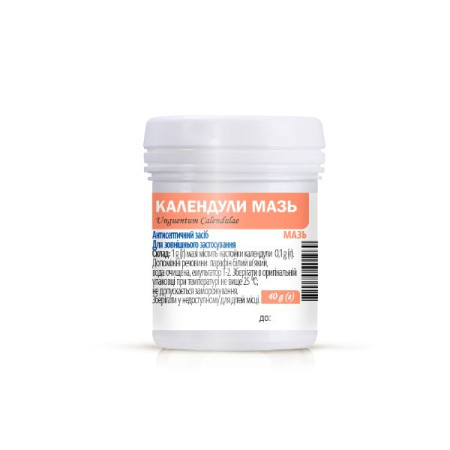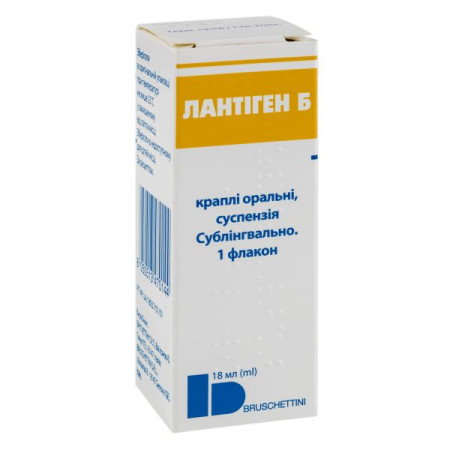Ornimac solution for infusion 5 mg/ml bottle 100 ml

Instructions Ornimac solution for infusion 5 mg/ml bottle 100 ml
Composition
active ingredient: ornidazole;
100 ml of solution contain 500 mg of ornidazole (calculated on 100% dry matter);
Excipients: sodium chloride, disodium edetate, diluted hydrochloric acid, sodium hydroxide, water for injections.
Dosage form
Solution for infusion.
Main physicochemical properties: clear colorless or light yellow liquid.
Pharmacotherapeutic group
Antibacterials for systemic use. Imidazole derivatives. ATX code J01X D03.
Pharmacological properties
Pharmacodynamics
The mechanism of action of ornidazole is associated with disruption of the DNA structure in susceptible microorganisms. Ornidazole is active against Trichomonas vaginalis, Entamoeba histolytica, Giardia lamblia (Giardia intestinalis), as well as some anaerobic bacteria, such as Bacteroides, Fusobacterium spp.; anaerobic bacteria: Clostridium spp., sensitive strains of Eubacterium spp; anaerobic cocci: Peptococcus spp., Peptostreptococcus spp.
It easily penetrates the microbial cell and, by binding to DNA, disrupts the replication process.
Pharmacokinetics
Ornidazole penetrates well through the blood-brain and placental barriers, enters the cerebrospinal fluid, bile, and penetrates into breast milk. With intravenous administration at a dose of 15 mg/kg and subsequent administration at a dose of 7.5 mg per 1 kg of body weight every 6 hours, the equilibrium concentration is 18–26 μg/ml. Approximately 30–60% of the drug is metabolized in the body by hydroxylation, oxidation, and glucuronidation.
Excretion: Ornidazole is excreted mainly in the urine (60–80%), almost 20% in unchanged form, 6–15% in the feces.
Indication
Parenteral administration of the drug is indicated in cases of acute and severe infection or when oral administration is not possible in the following diseases and conditions:
anaerobic systemic infections caused by ornidazole-sensitive microflora: septicemia, meningitis, peritonitis, postoperative wound infections, sepsis, septic abortion and endometritis; prevention of infections caused by anaerobic bacteria during surgical interventions (especially during operations on the colon and rectum), during gynecological operations; amoebic dysentery with severe course, all extraintestinal forms of amebiasis, giardiasis, liver abscess.
Contraindication
Hypersensitivity to the components of the drug or to other nitroimidazole derivatives. CNS lesions, epilepsy, multiple sclerosis, chronic alcoholism. Circulatory disorders, pathological blood lesions or other hematological abnormalities.
Interaction with other medicinal products and other types of interactions
Unlike other nitroimidazole derivatives, ornidazole does not inhibit aldehyde dehydrogenase and is therefore compatible with alcohol. However, ornidazole enhances the effect of oral coumarin anticoagulants (warfarin), which requires appropriate dosage adjustment.
Ornidazole prolongs the muscle relaxant effect of vecuronium bromide.
Concomitant use of phenobarbital and other enzyme inducers reduces the circulation period of ornidazole in the blood serum, while enzyme inhibitors (e.g. cimetidine) increase it.
Application features
When exceeding the recommended doses, there is a certain risk of side effects in children, patients with liver damage, patients who abuse alcohol. When using high doses of ornidazole and in the case of treatment for more than 10 days, clinical and laboratory monitoring is recommended.
In individuals with a history of blood disorders, monitoring of leukocytes is recommended, especially during repeated courses of treatment.
Aggravation of central or peripheral nervous system disorders is possible during treatment with ornidazole. In the event of peripheral neuropathy, impaired coordination of movements (ataxia), dizziness or clouding of consciousness, treatment should be discontinued.
Exacerbation of candidiasis may occur, requiring appropriate treatment.
In case of hemodialysis, it is necessary to take into account the reduction in the half-life and prescribe additional doses of the drug before or after hemodialysis.
Lithium salt concentrations, creatinine and electrolyte concentrations should be monitored during lithium therapy.
The effect of other medicines may be increased or decreased during treatment with ornidazole.
Ability to influence reaction speed when driving vehicles or other mechanisms
When using ornidazole, such manifestations as drowsiness, muscle rigidity, dizziness, tremor, convulsions, impaired coordination, temporary loss of consciousness are possible. The possibility of such manifestations should be taken into account by patients who drive vehicles or work with other mechanisms.
Use during pregnancy or breastfeeding
Ornidazole is contraindicated in the first trimester of pregnancy. In the second and third trimesters, the drug should be taken only if absolutely necessary. If it is necessary to use ornidazole, breastfeeding should be discontinued.
Method of administration and doses
The dosage and duration of treatment are determined by the doctor depending on the nature of the disease and treatment regimens.
For anaerobic systemic infections, adults and children over 12 years of age should be given an intravenous dose of 500–1000 mg as an initial dose, followed by 500 mg every 12 hours or 1000 mg every 24 hours for 5–10 days (stepwise dose). After the patient's condition has stabilized, oral ornidazole should be administered (e.g., 500 mg tablets, 1 tablet every 12 hours).
Children under 12 years of age with a body weight of more than 6 kg should be prescribed a daily dose of 20 mg/kg of body weight, divided into 2 administrations, for 5–10 days.
For the prevention of anaerobic infections during surgical interventions, ornidazole should be prescribed to adults and children over 12 years of age at a dose of 500–1000 mg 30 minutes before surgery.
For the prevention of mixed infections, ornidazole should be used together with aminoglycosides, penicillin or cephalosporins. The drugs should be administered separately.
Severe amoebic dysentery, all extraintestinal forms of amebiasis, giardiasis, liver abscess: for adults and children over 12 years of age, the first dose is 500–1000 mg, then 500 mg every 12 hours for 3–6 days.
Children under 12 years of age with a body weight of more than 6 kg should be prescribed a daily dose of 20–30 mg/kg of body weight, divided into 2 administrations.
In case of impaired renal function, extend the interval between administrations or reduce the single and daily dose of the drug.
Children
Ornidazole is contraindicated in children weighing less than 6 kg.
Overdose
Symptoms: loss of consciousness, headache, dizziness, tremors, convulsions, depression, peripheral neuritis, nausea, vomiting, anorexia, possible exacerbation of symptoms of other adverse reactions.
Treatment is symptomatic, a specific antidote is unknown.
Adverse reactions
Blood and lymphatic system disorders: bone marrow effects, moderate leukopenia, neutropenia.
Immune system disorders: hypersensitivity reactions, including anaphylactic shock, angioedema.
Skin and subcutaneous tissue disorders: skin rash, urticaria, skin hyperemia, itching.
Nervous system: dizziness, drowsiness, headache, tremor, muscle rigidity, coordination disorders, ataxia, convulsions, temporary loss of consciousness, confusion, signs of sensory or mixed peripheral neuropathy, agitation.
On the part of the digestive tract: taste disturbance, metallic taste in the mouth, dry mouth, tongue coating, nausea, vomiting, dyspepsia, feeling of heaviness and pain in the epigastric region.
Liver and biliary tract disorders: hepatotoxicity, changes in liver function tests.
General disorders and administration site conditions: fever; chills; general weakness; fatigue; shortness of breath; injection site conditions including pain, redness, and burning sensation at the injection site.
Others: darkening of urine color, cardiovascular disorders, including decreased blood pressure.
Expiration date
2.5 years.
Storage conditions
Store in the original packaging at a temperature not exceeding 25 °C, out of the reach of children.
Packaging
100 ml in a bottle; 1 bottle in a pack.
Vacation category
According to the recipe.
Producer
Private Joint Stock Company "Infusion".
Location of the manufacturer and its business address
Ukraine, 23219, Vinnytsia region, Vinnytsia district, village Vinnytskie Khutory, Nemyrivske highway st., bldg. 84A.
There are no reviews for this product.
There are no reviews for this product, be the first to leave your review.
No questions about this product, be the first and ask your question.








